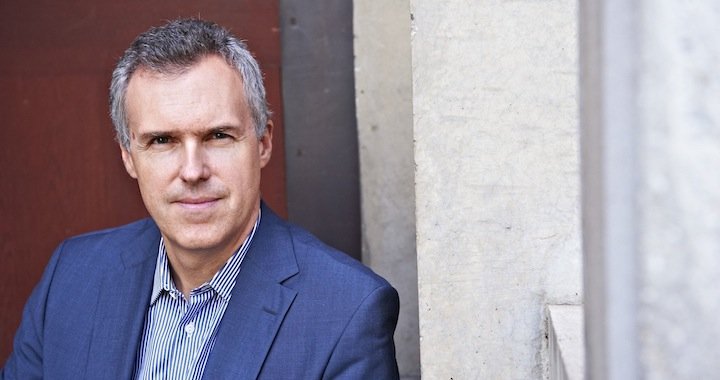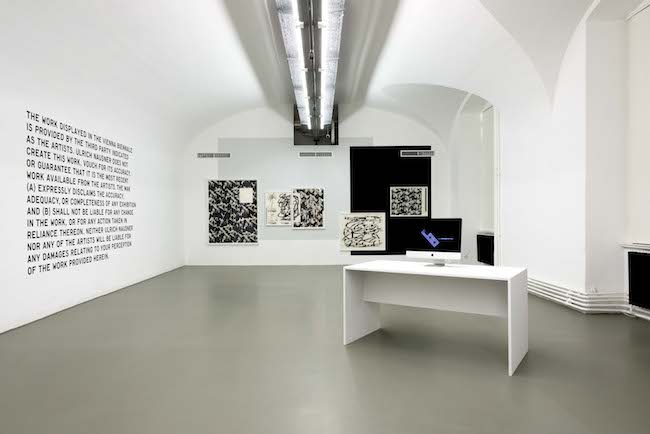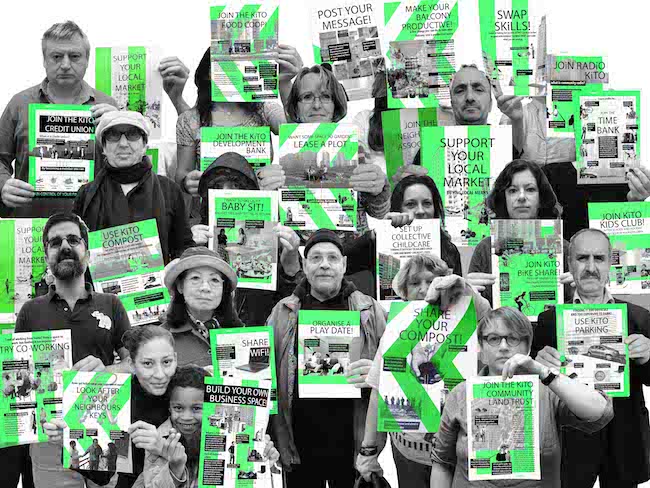
Vienna Biennale 2015: Ideas for Change
An Interview with Christoph Thun-Hohenstein
Irene Gludowacz*
22/10/2015
In a historical building in the center of Vienna I have a conversation with the Director of the MAK – Austrian Museum of Applied Arts / Contemporary Art. Founded in 1864 and opened in 1871 as the “k.k. Österreichisches Museum für Kunst und Industrie” (Imperial and Royal Austrian Museum of Art and Industry), it was modeled on London’s Victoria & Albert Museum. Today, it is a multidisciplinary museum of international relevance. Austrian diplomat, lawyer, and art manager Christoph Thun-Hohenstein is the Director of this institution and the initiator of the first multisector biennale in the world, the Vienna Biennale. He has been heading the world’s second-oldest museum of applied art since the fall of 2011. After a career in the diplomatic service of the Ministry of Foreign Affairs, which took him to Abidjan, Geneva, and Bonn, among others, he headed the Austrian Cultural Forum New York from 1999 to 2007. He was subsequently appointed Director of “departure,” the creative center of the Vienna Business Agency. He has authored numerous publications on a wide range of issues, including “EU integration,” contemporary art, and culture. Christoph Thun-Hohenstein holds two doctorates, gives lectures on contemporary art around the world, has curated many exhibitions, and serves as a member of art juries.
Branches of the MAK include Vienna’s “Geymüllerschlössel,” the “MAK Center for Art and Architecture,” Los Angeles, as well as the Josef Hoffmann Museum in Brtnice, Czech Republic, a joint branch of the Moravian Gallery in Brno and the MAK.
How did the idea take shape of a Vienna Biennale connecting art, design, and architecture? Does Vienna need a Biennale?
For many years I have been keenly interested in exploring issues pertaining to digital environments and mindsets – how these technologies influence our lives and will do so to an even greater extent in the future. I am firmly convinced that the fields of art represented at the MAK – applied arts, design, architecture, and contemporary art – should tackle this question with greater urgency and at a more fundamental level. Furthermore, we wanted to shine a light on the Vienna that was one of the main platforms for Western Modernism over one hundred years ago and especially played a role in a multidisciplinary manner.
Does “multidisciplinary” also include technology?
Yes, of course, it includes technology, and all other possible directions, always in connection with a wide-open approach and the greatest respect among the disciplines, which allows them to inspire each other. Some years back, the coming together of these considerations was something I already brought with me to my new function at the MAK. The initial plan was for a triennial event, but for a number of reasons and to achieve a greater frequency it became a Biennale, initiated and coordinated by the MAK and organized in partnership with five partner institutions: the University of Applied Arts Vienna, the Kunsthalle Wien, the Architekturzentrum Wien, the Vienna Business Agency with its creative unit departure, and with support from the AIT Austrian Institute of Technology as a non-university research partner. There were no funds available for setting up a special Biennale organization. The most important question was: How can we integrate the arts, especially the fine arts along with design and architecture, into the development of a new “Digital Modernity.” On the one hand, it is generally believed that this is important and good for the respective arts – we’re all on that page; on the other hand, this Digital Modernity is also in need of creative input. The big, controlled corporate interests should not take center stage. Rather, a comprehensive perspective must be developed in order to harness the possibilities of this Digital Modernity and direct positive change in the right direction.

24/7: the human condition, MAK DESIGN LAB, MAK GALLERY. Exhibition View, 2015. VIENNA BIENNALE 2015: IDEAS FOR CHANGE. © MAK/Aslan Kudrnofsky
The premiere of the Biennale is dedicated to the theme of “Ideas for Change”. What are the themes and what’s behind the idea?
There are three main themes:
- Theme one: What effect does digital technology have on us? How does it change us in our professional and private lives? Be it in the field of further developing the human brain or our community life, what are the opportunities and perils it brings?
- Theme two: the massive overexploitation of planet earth. The current footprint of the northern countries is something we can no longer afford – the south must develop in a decidedly more sustainable direction, if only for reasons of massive population growth.
- Theme three: the extreme inequality in this world. I am not suggesting that all of us can be one hundred percent equal – but there is an urgent need to strongly reduce inequality.
These themes are interconnected. For example, efficiently reducing our ecological footprint requires a significant change in people’s attitudes. We want to make this footprint measurable for everyone individually – how much should I consume, how much am I actually consuming, and by how much could I reduce my consumption through adjustments in my daily life? If we could measure that with an app on every smartphone that would be a great contribution towards preventing overexploitation.
One positive example is “open online courses” where the best professors on the planet are now available as teachers. Some 100,000 students from around the globe are enrolled in them and graded. They are often better than the students on location – thus modern digital endeavors contribute to the reduction of educational inequality.
A further example is employment resulting from the introduction of digital technology – how can new jobs be created that help us overcome inequality, get a grip on the problem of climate change, ones that cannot be performed by robots. There is no limit to inventiveness and ingenuity, and these examples show how all these things are interconnected.
What can the arts contribute in this area, what can they achieve in the technological, ecological, social, and political realms?
Today, design is essentially an interface – design or communication design and, with an integrated approach, corporate consulting. Today, if a company produces a product with a designer, it would be well-advised to discuss all facets of the task from an integrated perspective and not just in terms of aesthetics. Design must facilitate integrated processes – that’s also the formula for the success of the iPhone. This is about the connection of technology with a high design demand – without hefty instruction manuals and allowing for easy handling.
Architecture is not just concerned with “construction,” but also with urban planning, irrespective of whether future buildings are created or existing ones are already there. The challenge here is to be able to move and communicate with each other in the best possible way so as, ultimately, to live together in the best possible way.
In the fine arts, there will always be artists, painters as well as sculptors that work with abstract forms and not with social and political issues. I want to focus on the fundamental subject matter and make sure artists are aware of the enormous changes and possibilities of the digital modern age. I believe that over the last decades we have had too much self-referential navel-gazing in the fine arts, and this is still the case. The market greatly boosts this development, because it demands repetition of the tried and trusted, over and over. The strained finances of these institutions, in turn, rely on support from the market. On the other hand, many of the best artists are also the ones that are successful on the market. We need them too, just as much as we need those that make good art but are not successful right away. What this means is that there should be a stronger involvement with these issues in the fine arts. That’s actually the message we begin with and I am not under the illusion that a new Biennale will get it across the first time around – especially considering competing international events in the art world.

Uneven Growth. Atelier d’Architecture Autogérée and Superpool, Tactics for Resilient Post-Urban Development, KITO actions, 2014. © Atelier d’Architecture Autogérée
How did artists from the three areas react?
Following a realistic approach, we settled for three fields of art and wanted to tackle the theme of the CITY. This is a big subject and we aimed to give the different disciplines a chance to speak on various urban constellations. At the first Biennale it would not have been possible to force everything into one joint exhibition. During the development phase of the Vienna Biennale, architecture curator Pedro Gadanho – who is currently with MOMA, New York, and has been named Artistic Director of the new Museum of Art, Architecture and Technology (MAAT) in Lisbon – came up with the idea to bring together interdisciplinary teams to test new architectural possibilities for six megacities. The idea was born in Vienna but was first presented in New York, for the simple reason that originally a triennial fair was planned for 2014, which then became the Vienna Biennale 2015. The exhibition “Uneven Growth: Tactical Urbanisms for Expanding Megacities” shows how one can seize upon interesting developments taking the example of Hong Kong, Istanbul, Lagos, Mumbai, New York and Rio de Janeiro, as well as the project “2051: Smart Life in the City,” which also deals with this perspective. Additionally, we included a city from behind the former Iron Curtain. Bucharest used to be called the Paris of the East, and emerging from a long period under different political systems it shows a very good urban development. The Biennale-exhibition “Mapping Bucharest: Art, Memory, and Revolution 1916–2016” explored the enormous potential of the art scene in Bucharest and Romania. Part of the exhibition were the award-winning entries to the idea competition “Create Your Bucharest,” which seeked out new impulses for the future of the Romanian metropolis and received 225 submissions. In this constellation, “Mapping Bucharest: Art, Memory and Revolution 1916–2016” represented the most profound, comprehensive, and largest show on Bucharest. It is our view that artistic involvement with difficult political systems also generates ideas for the future.
Generally, artists are mostly the first to grapple with these complex issues that point the way to the future in their artistic ideas – they are antennas.
What was the response from visitors?
I am highly pleased with the visitor figures. My most important conclusion is that we need to increase our “audience development” efforts. We need to reach people who are not attracted to museums but are concerned about their own future and want to come to terms with the digital age. The “unity of the arts” approach does not aim at a fusion of the arts, it cultivates mutual respect and an exchange of inspiration and information. It thus brings all those involved to a whole new level. Museums like MoMA, New York, or V&A, London already foster these tendencies and we are also pioneers in this development. The point is that if an exhibition is dedicated to “Ideas for Change” – how much inspiration will visitors take home with them!
What is the gist of the first Biennale? What ideas are in the pipeline for the second Vienna Biennale? What has changed? What are you working on?
Let’s not forget that we live in a time that is probably comparable to the era that followed the invention of printing or the industrial revolution. There is no way a single Biennale launched under difficult financial circumstances can convey a full picture of our “digital age.” That’s a process and at this point we are already in wonderful negotiations with external partners on the development and presentation of spectacular expertises that lay out the core themes of the next Biennale.
We discuss what we are working on in order to achieve an objective, which is to attract the interest of many people as possible for this subject and the respective contributions in the fields of art, design and architecture. Two of these disciplines are closely involved with everyday life. Therefore, we will not place fine art under this obligation, too, but will attempt – and that’s the most difficult part – to move to a meta-level together, and that sends out entirely different impulses than a Biennale exclusively showing fine art. We want to achieve far greater openness between the arts, in order to spark interest and mutual appreciation. That’s not something we can bring about as institution but we can attract attention to it on a larger scale. It is necessary to reflect on and think through the status quo from an overall perspective and in an overall context – so far there is no forum that addresses all aspects of this question – including both benefits and risks.
* Based in Vienna, Irene M.Gludowacz M.A is an author, curator and communication expert for foundations, museums and corporations in the international art world. She is also the co-author of the books “A Passion for Art: Art Collectors and Their Houses” (2005) and “Global Art” (2009)